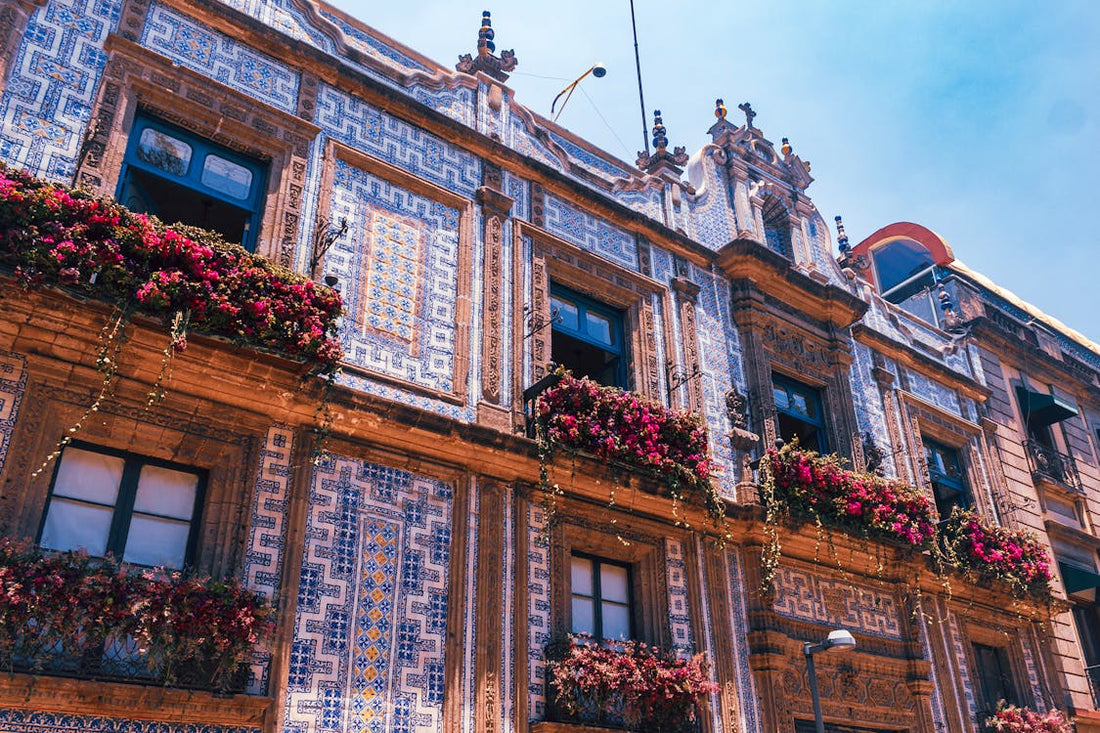Iconic Places in Mexico City / La Casa de los Azulejos
To say that a place is "iconic" can feel somewhat empty in today's context where, for influencers, anything can be labeled as "iconic." However, a place that appears in the painting "La entrada del ejército trigarante" (Anonymous, ca. 1882) truly deserves the title in every sense of the word.

By Jajo Crespo / Photos by Diego Delso
The History of La Casa de los Azulejos
The first construction, which didn't resemble La Casa de los Azulejos at all, was built in the 16th century, shortly after the conquest. It wasn't until later that the property came into the hands of Luis de Vivero, the Second Count of Valle de Orizaba. Under their ownership, the house earned the nickname "Palace of the Counts of Valle de Orizaba" and they were the ones who unified the two mansions that now compose La Casa de los Azulejos.

However, the distinctive appearance of the house is credited to one of their descendants, doña Graciana Suárez de Peredo, the Fifth Countess of Valle de Orizaba. It was she who had the building covered with tiles brought from Puebla in 1737, about 70 years before Mexico's Independence.
Around 1881, the house was rented out and became the Jockey Club of Mexico, an exclusive association where the Mexican elite gathered during the Porfiriato. In an ironic twist of fate, the house that once belonged to nobility became the headquarters of the Casa del Obrero Mundial, an anarcho-syndicalist organization, for a couple of years in 1915.
The Art of and in La Casa de los Azulejos
On September 27, 1821, the Trigarante Army, led by Agustín de Iturbide, triumphantly entered Mexico City. This event was immortalized in an anonymous watercolor known as La entrada del ejército trigarante, which today decorates La Casa de los Azulejos.

In a hypermodernist burst, one of the astral emanations of Manuel Gutiérrez Nájera, the Duke of Job, immortalized the Jockey Club in the poem titled "La duquesa Job":
From the gates of Surprise
to the corner of the Jockey Club,
there's no Spanish, Yankee, or French
more beautiful or more mischievous
than the Duchess of the Duke Job.
Inside the house, you can find the mural "Omnisciencia" by José Clemente Orozco, commissioned by his patron Francisco-Sergio de Yturbide e Idaroff.

In the main hall, there is the mural "Pavorreales," which, it is said, was painted by the Hungarian artist Pacologue (although not as cool as Orozco's).
Present Day
On February 9, 1931, amid the Cristero War, the property was declared a national monument to preserve it. However, for some strange reason, around 1970, the house was acquired by Sanborn's restaurants, who still own it today. The chain restored the place, which had been damaged by earthquakes, and turned it into one of their restaurants, where we can still go to remember all the twists and turns of life while admiring Orozco's mural.
- Address: Av Francisco I. Madero 4, Centro Histórico de la Cdad. de México, Centro, Cuauhtémoc, 06500 Ciudad de México, CDMX
- Opening hours: Daily from 7 a.m. to 1 a.m.
- Ideal for: Food, breakfast, coffee, and admiring the place.
- Type of cuisine: Mexican.
- Payment: Cash and cards.
- Accessibility: Yes.
- Parking: No.
- Reservations: Not necessary.
- Nearby public transport: Bellas Artes metro, Zócalo, San Juan de Letrán.
- Pet friendly: No.
- Suitable for children: Yes.
- Vegan options: No.
- Price of beer: 50 pesos.
